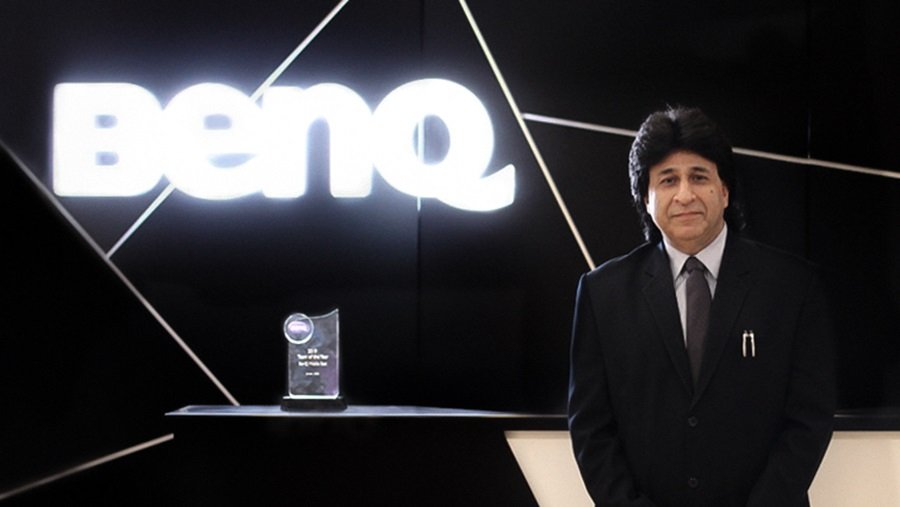Manish Bakshi, Managing Director, BenQ Middle East, highlights that with technological advances, businesses must adapt to the new changes to stay relevant, competitive, and efficient.
In an era where technology has become the backbone of businesses, corporate communication is rapidly evolving. The future of corporate communication is destined to be smart, secure, and seamless. This new norm will be shaped by advanced interactive displays, secure cloud access, innovative whiteboarding solutions, effective device management systems, and a focus on employee well-being and sustainability.
Interactive Displays: The Game Changer
Interactive displays have revolutionized the way teams collaborate. These innovative tools enable teams to share ideas freely, solve problems effectively, and collaborate more creatively and efficiently. Corporate interactive displays designed for professionals, such as the BenQ Board Pro RP8603 offer features like plug and present, wireless screen sharing, floating tools for idea tracking, and transforming into a powerful windows device, significantly upgrading workspaces. Moreover, they boast the incorporation of Intel’s potent 10th Gen Core processors, a powerful technology paves the way for a transformative workspace experience. The future calls for even more sophisticated solutions. Interactive displays with AI integration may allow for real-time data analysis and predictive insights. This could potentially transform brainstorming sessions, making them more productive and insightful.
Secure Cloud Access: The Key to Seamless Collaboration
Cloud technology has made remote working possible, but it’s the secure access to these technologies that makes them truly remarkable. Logging in with a tap of an NFC card or scanning a QR code not only ensures convenience but also maintains privacy. Secure cloud access enables employees to access their Google Drive, Dropbox, and OneDrive on any display, promoting seamless collaboration. Robust security measures like biometric authentication and blockchain-based security protocols are expected to ensure safe and secure access to corporate data in the future.
Whiteboarding Solutions: Maximizing Teamwork and Efficiency
Digital whiteboarding solutions have become integral to corporate communication. They allow for flexible presentations, easy brainstorming, and convenient collaboration. With the advent of cloud whiteboarding, remote attendees can contribute as if they were physically present. The future of whiteboarding solutions is promising, offering features like real-time translation for global teams and AI-assisted note-taking. These advancements will enable a more inclusive and efficient brainstorming process, allowing ideas from different corners of the world to be shared and developed in real-time. Additionally, the integration of AI can streamline the note-taking process, automatically transcribing and organizing ideas from the brainstorming session, freeing up more time for discussion and innovation.
Device Management Systems: Streamlining IT Operations
Device management systems are crucial for managing devices and accounts with ease. They provide centralized control, advanced analytics, and streamlined account management. As we look towards the future, these systems will likely incorporate machine learning algorithms to predict potential issues before they arise, thereby reducing downtime and improving productivity. This proactive approach to device management can save significant time and resources, as well as improve the overall efficiency of IT operations. Centralized control will become more sophisticated, offering detailed insights into device usage and performance. This data-driven approach can help identify trends, optimize resource allocation, and inform strategic decision-making.
The Role of Immersive Audio-Visuals in Corporate Communication
In the age of remote work and virtual meetings, immersive audio-visual technology plays a crucial role in facilitating effective communication. High-quality video and audio ensure clear, uninterrupted communication, making virtual meetings as effective as in-person ones. Advanced interactive displays offer compatibility with leading video conferencing software, ensuring seamless integration and effective communication. In the future, advancements such as 3D holographic conferencing and AI-enhanced noise cancellation are expected.
The Rise of Personalized Access
Personalized access is another trend shaping the future of corporate communication. With options like NFC card login or QR code scanning, users can quickly access their personal files on any display. This not only ensures convenience but also enhances security by limiting access to authorized users only. Future advancements in this area may include facial recognition technology and advanced biometric authentication. These technologies can offer a more personalized and secure user experience. Facial recognition technology can provide quick and easy access to personal files, while advanced biometric authentication can add an extra layer of security, preventing unauthorized access and protecting sensitive information.
Enhanced Employee Well-being and Sustainability
Incorporating tools that promote employee well-being into communication technologies is becoming common in corporations. Features like germ-resistant touchscreens, eye protection standards, and built-in air quality sensors are not just innovative but necessary in today’s world. In addition, environmental sustainability is becoming a significant factor in corporate communication technology. Built-in air quality sensors and air ionizers, are examples of this trend. They monitor and improve indoor air quality, contributing to a healthier work environment. The future will see a surge in wellness-focused technologies, possibly integrating stress management tools, ergonomic design principles, and even mental health support features within corporate communication technologies. More environmentally friendly features, such as energy-efficient designs, recyclable components, and smart power management systems, are also expected.
In conclusion, the future of corporate communication is bright, with smart, secure, and seamless solutions leading the way. As technology continues to advance, businesses must adapt to these changes to stay relevant, competitive, and efficient.











